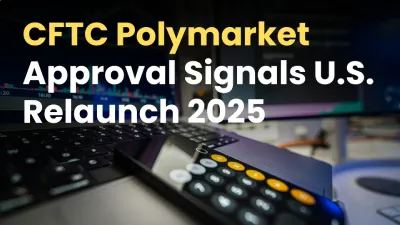简体中文
繁體中文
English
Pусский
日本語
ภาษาไทย
Tiếng Việt
Bahasa Indonesia
Español
हिन्दी
Filippiiniläinen
Français
Deutsch
Português
Türkçe
한국어
العربية
Oil rises on U.S. crude stocks data, tight supply outlook
Abstract:Oil prices eased on Thursday, reversing course from the previous session, as rising output from Russia and worries about a potential global recession weighed on futures.

Oil prices rose on Thursday as robust U.S. fuel consumption data and expected falls in Russian supply late in the year offset concerns that a possible looming recession could undercut demand.
Brent crude futures climbed $1.43, or 1.5%, to $95.08 a barrel by 0900 GMT. U.S. crude futures gained $1.15, or 1.3%, to $89.26 a barrel.
Prices rose more than 1% during the previous session, although Brent at one point fell to its lowest since February.
Futures have fallen over the past few months, as investors have pored over economic data that has spurred concerns about a potential recession that could hurt energy demand.
British consumer price inflation jumped to 10.1% in July, its highest since February 1982, intensifying a squeeze on households.
Chinas refining output remained lacklustre in July as strict COVID-19 lockdowns and fuel export controls curbed production.
Supporting prices, U.S. crude stocks fell by 7.1 million barrels in the week to Aug. 12, Energy Information Administration (EIA) data showed, against expectations for a 275,000-barrel drop, as exports hit 5 million barrels per day (bpd), the highest on record.
Bans by the European Union on Russian seaborne crude in December and on products imports early next year could dramatically tighten supply and drive up prices, analysts warn.
“The EU embargoes will force Russia to shut in around 1.6 million barrels per day (bpd) of output by year-end, rising to 2 million bpd in 2023,” consultancy BCA research said in a note.
“EU embargoes on Russian oil imports will significantly tighten markets and lift Brent to $119 a barrel by year-end.”
For now, however, Russia has started to gradually increase oil production after sanctions-related curbs and as Asian buyers have increased purchases, leading Moscow to raise its forecasts for output and exports until the end of 2025, an economy ministry document reviewed by Reuters showed.
Russias earnings from energy exports are expected to rise 38% this year partly due to higher oil export volumes, according to the document, in a sign that supply from the country has not been affected as much as markets originally had expected.

Disclaimer:
The views in this article only represent the author's personal views, and do not constitute investment advice on this platform. This platform does not guarantee the accuracy, completeness and timeliness of the information in the article, and will not be liable for any loss caused by the use of or reliance on the information in the article.
Read more

CFTC Polymarket Approval Signals U.S. Relaunch 2025
CFTC Polymarket approval clears path for Polymarket U.S. relaunch 2025, reshaping regulated prediction markets in the United States.

In-Depth Review of MH Markets Trading Conditions and Leverage – An Analysis for Experienced Traders
For experienced traders, selecting a broker is a meticulous process that extends far beyond marketing claims and bonus offers. It involves a granular analysis of the core trading environment: the quality of execution, the flexibility of leverage, the integrity of the regulatory framework, and the suitability of the conditions for one's specific strategy. MH Markets, a broker with a 5-10 year operational history, presents a complex and multifaceted profile that warrants such a detailed examination. This in-depth review dissects the MH Markets trading conditions and leverage, using primary data from the global broker inquiry app, WikiFX, to provide a clear, data-driven perspective. We will analyze the broker's execution environment, account structures, and regulatory standing to determine which types of traders might find its offering compelling and what critical risks they must consider.

MH Markets Commission Fees and Spreads Analysis: A Data-Driven Breakdown for Traders
For any experienced trader, the long-term viability of a brokerage partner hinges on a delicate balance of trust, execution quality, and, critically, cost. Trading fees, both direct and indirect, can significantly erode profitability over time. This makes a granular understanding of a broker's cost structure not just beneficial, but essential. This in-depth analysis focuses on MH Markets, breaking down its commission fees, spreads, and other associated costs to provide a clear, data-driven perspective for traders evaluating this broker for their long-term strategies. Drawing primarily on verified data from the global broker inquiry platform WikiFX, alongside other public information, we will dissect the MH Markets spreads commissions cost structure. We aim to move beyond marketing claims and uncover the practical, real-world costs of trading with this broker, helping you determine if its pricing model aligns with your trading style and financial goals.

Is Tio Markets Legit? Detailed Review with Real User Complaints
So, we will begin this Tio Markets review with the key topic—its regulation and the authorities it is licensed under. After that, we will walk you through the real user complaints we found during our research.
WikiFX Broker
Latest News
The 350 Per Cent Promise That Cost Her RM604,000
In-Depth Uniglobe Markets Commission Fees and Spreads Analysis – What Traders Should Really Know
WikiFX's New Evaluation of ATM Capital LTD: Does its License Protect the Arab Investor?
Is Axi Legit? A Data-Driven Analysis of Its Regulatory Standing and Trader Feedback
How a Fake Moomoo Ad Led to the “New Dream Voyage 5” Scam
FXPesa Review: Are Traders Facing High Slippage, Fund Losses & Withdrawal Denials?
Trive Investigation: High Score, Hidden Risk - The Profit Paradox
CMC Markets Australia Revenue Surges 34%, But High-Net-Worth Clients Face Tax Phishing Threat
"Just 9 More Lots": Inside the Endless Withdrawal Loop at Grand Capital
GCash Rolls Out Virtual US Account to Cut Forex Fees for Filipinos
Currency Calculator



